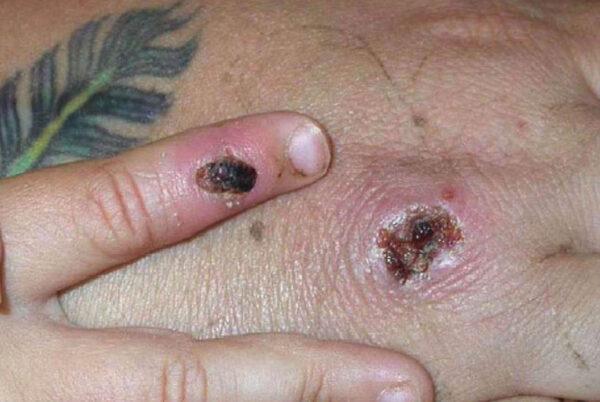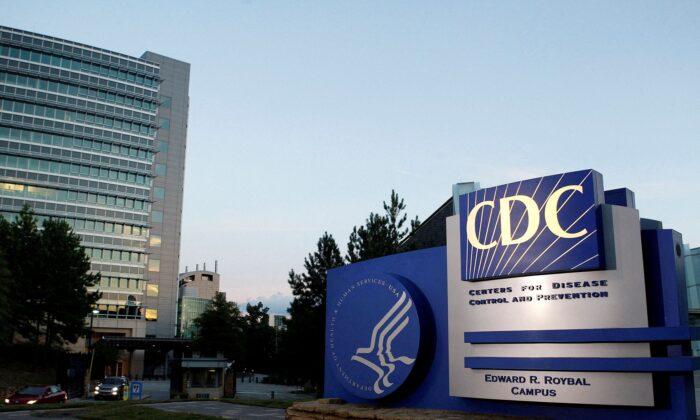The Center for Disease Control and Prevention (CDC) issued an advisory on Friday asking doctors across the United States to be on the watch for monkeypox, as the World Health Organization has confirmed 80 confirmed cases across 11 countries.
Monkeypox is a viral disease typically endemic to central and western Africa, but since the start of May, dozens of confirmed cases have been reported in several countries outside of the continent. Many more suspected cases are being investigated.
The CDC is asking doctors to “be vigilant to the characteristic rash associated with monkeypox” and describes the rash as involving “vesicles or pustules that are deep-seated, firm or hard, and well-circumscribed,” adding that the lesions “may umbilicate or become confluent and progress over time to scabs.”

It adds that doctors should be more suspicious for the disease and consider it as a possible diagnosis if, in addition to having a characteristic rash, their patient has traveled to countries with recently confirmed cases of monkeypox; reports having had contact with anyone who had monkeypox, or suspected monkeypox, or have a rash similar in appearance to monkeypox; or is a man who regularly has close or intimate in-person contact with other men.

“Some patients may present with proctitis, and their illness could be clinically confused with a sexually transmitted infection (STI) like syphilis or herpes, or with varicella zoster virus infection,” the agency adds. Proctitis is inflammation of the lining of the rectum and can cause rectal pain, diarrhea, bleeding, and discharge.
Prior to May, cases outside of Africa were among people with a recent history of travel to Nigeria or contact with another person confirmed with monkeypox, the CDC noted. But there have been confirmed cases since the start of the month without a history of travel to Africa, the CDC noted, adding that the source of the cases “is unknown.”

The CDC noted that in the case of the United Kingdom, there was a “temporally clustered group of cases involving four people who self-identify as gay, bisexual, or men who have sex with men.”
Recent Outbreaks ‘Atypical’: WHO
The WHO said on Friday that the recent outbreaks across 11 countries so far are “atypical, as they are occurring in non-endemic countries.” It said there are about 80 confirmed cases and 50 pending investigations, with more cases likely to be reported in the near future.“People who closely interact with someone who is infectious are at greater risk for infection: this includes health workers, household members and sexual partners,” the WHO stated.
Monkeypox starts off with flu-like symptoms that include fever, muscle aches, and fatigue, as well as swelling of the lymph nodes. Within days after fever, a rash appears on the face and body, which can also include the genital or perianal area, the CDC states. The incubation period—time from infection to symptoms—can range from 5 to 21 days.
Another suspected monkeypox case is being investigated in New York City.
In 2021, the United States had two confirmed cases of monkeypox, one in Maryland and one in Texas. Both cases involved people who had recently traveled to Nigeria, where the virus is endemic.

“Jynneos does not contain the viruses that cause smallpox or monkeypox. It is made from a vaccinia virus, a virus that is closely related to, but less harmful than, variola or monkeypox viruses and can protect against both of these diseases,” the U.S. Food and Drug Administration stated in September 2019, at the time of the vaccine’s approval. “Jynneos contains a modified form of the vaccinia virus called Modified Vaccinia Ankara, which does not cause disease in humans and is non-replicating, meaning it cannot reproduce in human cells.”
According to the CDC, because the monkeypox virus is related to the virus that causes smallpox, the vaccine can protect people from getting monkeypox.
“Smallpox and monkeypox vaccines are effective at protecting people against monkeypox when given before exposure to monkeypox. Experts also believe that vaccination after a monkeypox exposure may help prevent the disease or make it less severe.”




